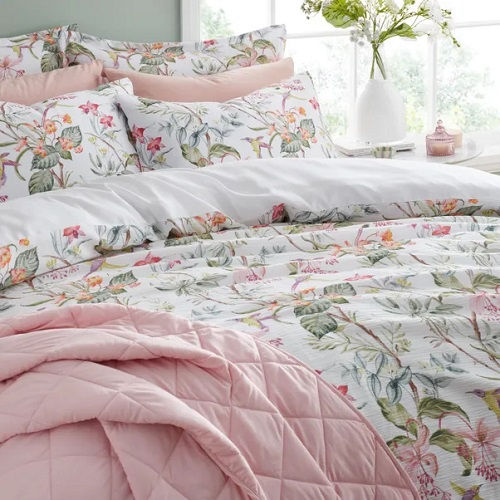Dirty Pillowcases Can Contribute to Poor Skin Hygiene
- Live Well Natural Skincare

- Oct 21
- 3 min read

Have you ever wondered how often you should change your pillowcase? For good skin hygiene, consider changing or washing your bedding and pillowcases at least once a week. And if you have acne-prone or sensitive skin, or if you tend to sweat at night, changing your pillow case twice a week can make a significant difference.

A clean pillowcase helps minimise the transfer of dirt and bacteria to your skin while you sleep. If you are looking to buy new bedding or pillowcases, opt for pillowcases made from soft, natural materials like high-thread-count cotton.
Are Silk Pillowcases Good for Skincare?
Absolutely! Silk pillowcases are a fantastic choice for your skin. They are considered less absorbent than cotton, meaning they won't draw moisture away from your face. The smooth texture of bedding made using silk helps to minimise skin creases and prevent skin irritation.

Some silk pillows are also hypoallergenic and cool to the touch, making them an excellent choice for anyone who overheats at night. Plus, silk doesn't attract dust mites or allergens, making it particularly gentle on sensitive skin.
Dirty Pillowcases - What is Pillowcase Acne?
Dirty pillowcases can contribute to poor skin hygiene and spots and acne can occur due to the friction and accumulation of oils, dirt, and sweat on your pillowcase. All that bacteria in your bedding and pillowcases can contribute to clogged pores and spots! If you wash and moisturise your face every evening, why lie on a smelly, sweaty pillow?

How can I determine if my pillowcase is causing my spotty skin?
If you've noticed spots on one side of your face (probably the side you prefer to sleep on), then it could be due to bacteria in the pillowcase or inferior fabrics. A fun way to check is to switch to a clean, non-irritating fabric, such as silk, or organic high-thread count cotton, and change your pillowcase every 2-3 days. Observe how your skin responds and remember that acne or blemishes can appear due to hormone imbalance and diet, so it's not just dirty bedding.

Does Changing Your Pillowcase Daily Help with Acne?
Switching your pillowcase daily can help reduce acne, particularly if you have oily skin. A fresh pillowcase keeps your face from coming into contact with the oils and bacteria that can lead to breakouts. Sweat and sebum from our head will also create an unhygienic environment for the skin on our faces.
What Type of Pillowcase is best?
Cotton
The most popular choice tends to be high thread-count cotton, preferably organic. It's a breathable, natural, soft, easy-care material.

Silk
This luxurious and smooth fabric is excellent for your skin and hair, but it can be expensive compared to cotton. But shop around and businesses such as Dunelm and Marks & Spencer do these luxury pillowcases for less than some brands.

Satin
This material is often confused with silk, but it is actually a man-made polyester. It is smooth but can be slippery, and it has a luxurious feel.

Linen
This is a lovely breathable and moisture-wicking material, but it is not smooth against your skin like high thread count cotton or silk.

Polyester
Polyester is cheaper than cotton, linen and silk. It is also very durable, but not the best material for breathability. It can also feel scratchy against the skin compared to high-thread-count cotton or silk.

Conclusion - Pillowcases Can Accumulate Bacteria
Did you know that if we don't wash our pillowcases and bedding regularly, they can gather bacteria, dirt, and even oils from our skin and hair? To keep your skin happy and healthy, it's a great idea to change your pillowcases regularly and remove makeup and any styling products from your hair before you go to sleep. This will ensure that the makeup and day's grime does not transfer to your pillowcase and bedding while you sleep.
Thank you for checking in.






Comments